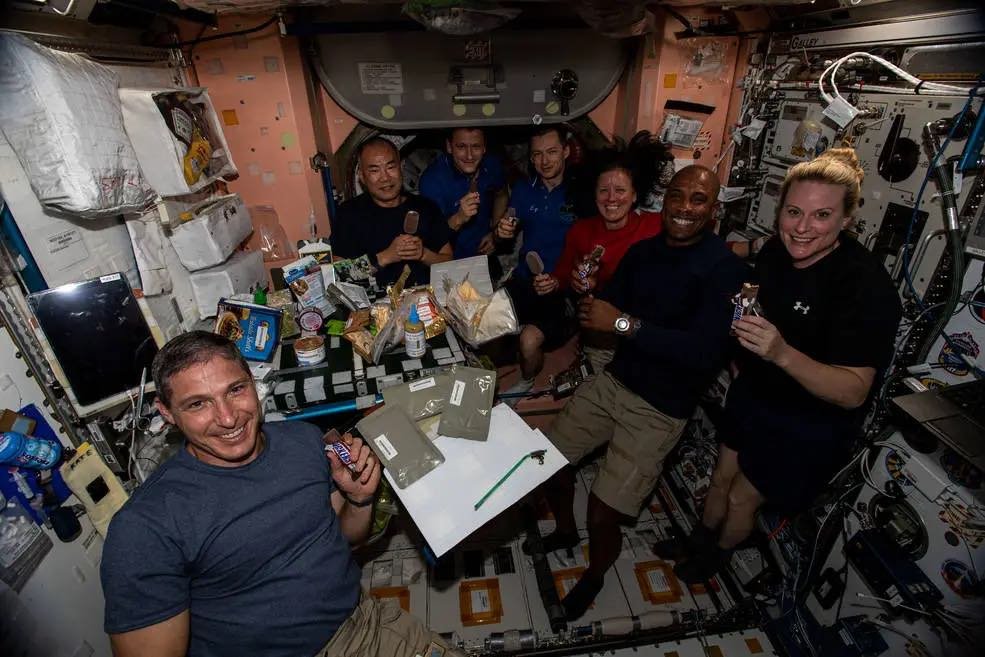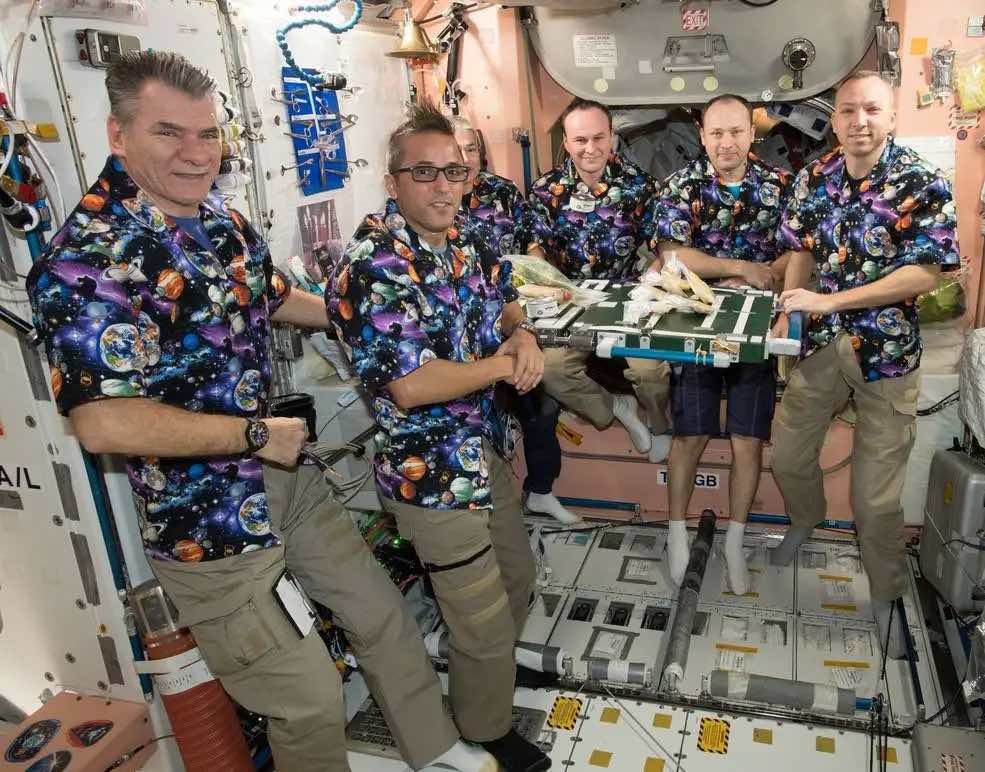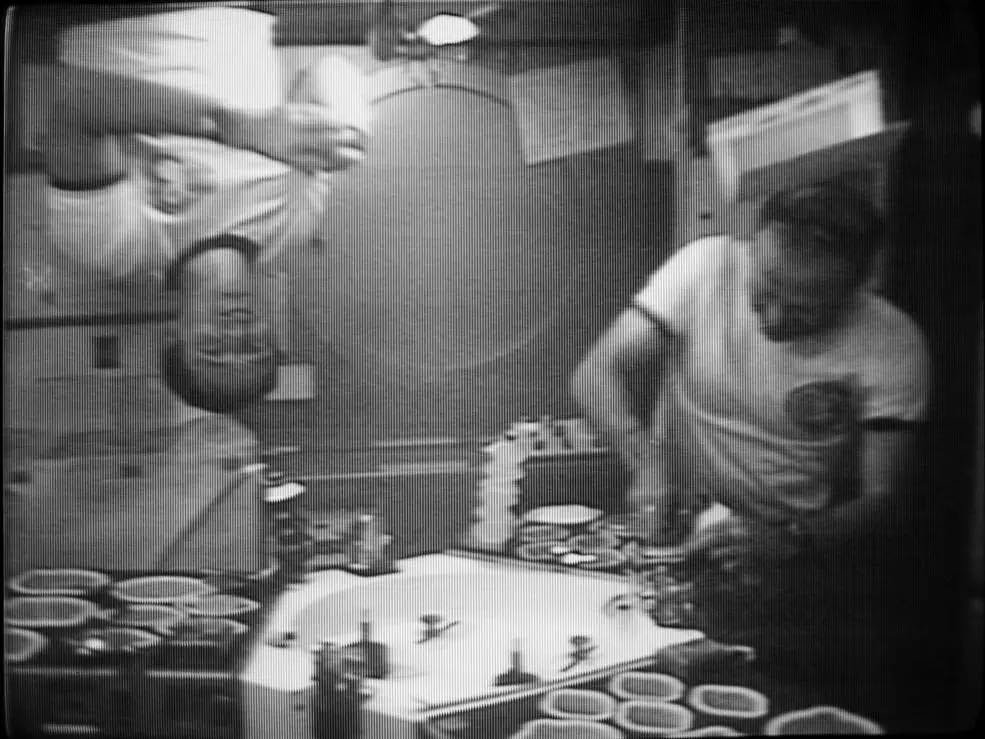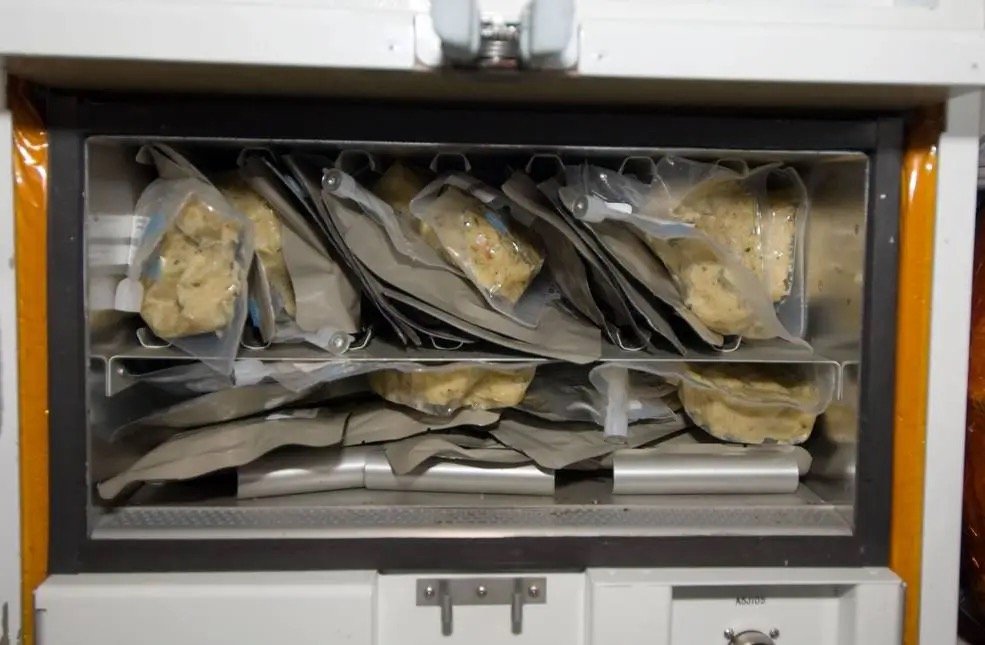

Welcome to this special Thanksgiving installment of The Intelligence Brief… this week, we’ll be taking a look at the history of Thanksgiving celebrations in space. Items on the menu include 1) Thanksgiving on board the International Space Station (ISS), 2) how food is prepared and sent to space, and how astronauts eat in the absence of gravity, and 3) a brief history of Thanksgiving celebrations in space over the decades.
Quote of the Week
-Nora Ephron
Latest News: In recent coverage from The Debrief, Christopher Mellon asks whether our elected officials should seek out and initiate disclosure of information the U.S. government possesses about UAP. Elsewhere, new research suggests AI that mirrors human neural networks could pave the way toward an artificially intelligent brain-like system. You can find all our recent stories at the end of this newsletter.
Podcasts: In podcasts from The Debrief, this week on The Debrief Weekly Report, MJ Banias and Stephanie Gerk explain why you should never, ever, read mysterious ancient tablets out loud. Elsewhere, on The Micah Hanks Program, I provide a recap of my recent visit to Stanford University for The Sol Foundation’s first annual event. You can subscribe to all of The Debrief’s podcasts, including audio editions of Rebelliously Curious, by heading over to our Podcasts Page.
Video News: Premiering this Friday on Rebelliously Curious, Chrissy Newton is joined by Dr. Michael P. Masters, a Professor of Biological Anthropology at Montana Tech who discusses UAP, anthropology, and the search for ET. Also, check out the latest episode of Ask Dr. Chance, where Dr. Glenn answers questions about time travel. You can get other great content from The Debrief on our official YouTube Channel.
With all that behind us, we now head into orbit to take a look at one of the most unique holiday traditions that exists: Thanksgiving in space.
Thanksgiving Aboard the ISS
While most Americans will be gathering around the table to celebrate this year’s Thanksgiving holiday, astronauts aboard the International Space Station will also be continuing a long tradition of celebrating from Earth’s orbit.
“For astronauts embarked on long-duration space missions, separation from family and friends is inevitable and they rely on fellow crew members to share in the tradition and enjoy the culinary traditions as much as possible,” reads a NASA FAQ page on astronaut Thanksgiving traditions.


So how do astronauts celebrate Thanksgiving aboard the space station, and what’s it like to enjoy a holiday meal in the absence of gravity to keep the gravy from floating away? Let’s look at a few of the items on this year’s Thanksgiving menu on the ISS, as well as the science of eating in space, and what past celebrations in orbit have involved.
The Subtle Science of Dining in Space
Astronauts pretty much already have dining in space down to a science. Food is prepared at NASA’s Space Food Systems Lab, where it is dehydrated and packaged in plastic packets prior to being carried into orbit, and ultimately delivered to the ISS aboard the SpaceX Dragon spacecraft.
Once it arrives at the ISS, all meal ingredients must be rehydrated after being delivered to orbit, which can take up to a half an hour for most meals. Once the food is prepared, fabric fasteners are used to attach individual containers holding various sides and main dishes onto a larger food tray, which is either fastened to some portion of the ISS, or even to the astronauts themselves.


Fortunately, Thanksgiving dinner will be a little nicer than the average rations served aboard the space station. Earlier this month, a delivery aboard SpaceX’s Dragon spacecraft carried a special holiday meal for the current Expedition 70 crew, which included Thanksgiving standards like turkey and duck, as well as favorite side dishes that included cranberry sauce, as well as a variety of other dishes that include seafood, Mediterranean fare, and even ingredients for pumpkin spice coffees and deserts.
An Orbital Holiday Tradition
Thanksgiving celebrations in space are nothing new; they mark a unique tradition that astronauts have observed for many decades.
The first Thanksgiving in space was celebrated by Skylab 4 astronauts Gerald P. Carr, Edward G. Gibson, and William R. Pogue in November 1973. Although the men enjoyed a hearty double-meal after missing lunch due to a 6.5 hour spacewalk undertaken earlier that day, there were no special dishes provided in observance of the holiday like astronauts receive today.


The next Thanksgiving celebration in orbit would not transpire for another twelve years, until the seven-member crew of STS-61B enjoyed irradiated turkey and cranberry sauce, along with shrimp cocktail, while on board the space shuttle Atlantis in 1985. Four years later, the STS-33 crew would celebrate Thanksgiving aboard the space shuttle Discovery. Two years later in 1991, Fred Gregory and Story Musgrave, who had both been on the STS-33 mission in 1989, celebrated their second Thanksgiving from orbit, this time aboard the space shuttle Atlantis along with the rest of the STS-44 crew.
Subsequent Thanksgiving celebrations ensued in space in 1996, when astronaut John Blaha joined several Russian cosmonauts aboard the space station Mir, while his fellow American astronauts with the STS-80 crew dined aboard the space shuttle Columbia. Although they were on separate spacecraft at the time, Blaha and the STS-80 astronauts exchanged holiday greetings via radio, and together achieved what, at the time, was a new record for the number of Americans simultaneously celebrating Thanksgiving in space.
The following year, that record was broken when David Wolf, also celebrating Thanksgiving from space alongside his Russian cosmonaut crew, helped to round out the even larger American crew of STS-87, with a combined total of nine Americans celebrating in orbit that year. Similar celebrations carried on into the 2000s, with meal options improving significantly over time to include items like candied yams, cornbread, green beans, and a variety of deserts worthy of Thanksgiving spreads generally only seen on Earth.


The tradition has continued right up to today, with the recent celebratory meal items that were delivered to the ISS for Expedition 70 to enjoy from their orbit approximately 250 miles above Earth. Wherever you may find yourself this holiday, we wish you all a very happy Thanksgiving, and a wonderful holiday season.
That concludes this week’s installment of The Intelligence Brief. You can read past editions of The Intelligence Brief at our website, or if you found this installment online, don’t forget to subscribe and get future email editions from us here. Also, if you have a tip or other information you’d like to send along directly to me, you can email me at micah [@] thedebrief [dot] org, or Tweet at me @MicahHanks.


Here are the top stories we’re covering right now…
- Disclosure and National Security: Should the U.S. Government Reveal What It Knows About UAP?
Should our elected officials seek out and initiate disclosure of information the U.S. government possesses about unidentified anomalous phenomena?
- Scientists Develop AI That Mirrors Human Neural Functions, Paving Way for Artificially Intelligent Brain-like Systems
New research suggests AI that mirrors human neural networks could pave the way toward an artificially intelligent brain-like system.
- Biology on the Moon? NASA Announces Ambitious Plans for a New Space Biology Research Initiative
NASA is gearing up for a new space biology research program, which the space agency says will advance its understanding of several areas of focus, including the ways lunar dust can affect animals and plants.
- Middle Stone Age Discovery May Extend Earliest Use of This Ancient Wearable Technology as Far Back as 150,000 Years
Archaeologists report a remarkable discovery on South Africa’s Cape Coast that could upend our thinking about the earliest use of one of humankind’s oldest forms of wearable technology.
- Do Not Read the Mysterious Ancient Tablet Out Loud. Ever.
SUBSCRIBE TO ‘THE DEBRIEF WEEKLY REPORT’: Apple Podcasts | Spotify On today’s episode, the team wanders into some bizarre mysteries. From a strange crash on the lunar surface, to exoplanet WASP-107b and its bizarre planetary evolution, and the discovery of a 3000-year old tablet containing a long forgotten language, the game is definitely afoot at The Debrief Weekly Report. Every Tuesday, join hosts MJ Banias and Stephanie Gerk as they roundup the latest science and tech stories from the pages of The Debrief. […]
- ‘Vampire Star’ Discovery Reveals Triple Stellar Secret That Could Upend Our Theories of Star Evolution
New research has revealed an unusual “vampire star” discovery that could have a significant impact on our understanding of stellar formation.
- Exotic Nitrogen-9 Isotope May Have Been Detected by Researchers in a Potential Physics Breakthrough
An international team of scientists reports a breakthrough discovery pointing to the existence of a mysterious nitrogen-9 nucleus.
- DARPA Funding ‘Game Changing’, High-Speed VTOL Aurora X-Plane
DARPA has signed an agreement with Boeing subsidiary Aurora Flight Sciences to develop the SPRINT high-speed VTOL Aurora X-Plane.
- James Webb Space Telescope Spots Features in the Heart of Our Galaxy Astronomers Can’t Yet Explain
The newest image produced by NASA’s James Webb Space Telescope showcases features that NASA says astronomers “have yet to explain.”
- SpaceX Starship: A Musing on Rockets and Their Effect on the Earth
Harvard astronomer Avi Loeb considers the effects of rockets on the Earth, following the latest test launch of the massive SpaceX Starship from Boca Chica, Texas.
- A Mystery Object Left a Bizarre, Double Crater as It Smashed into the Moon Last Year. Now Scientists Say It Wasn’t Alone.
A team of Arizona astronomers says they know the identity of a mysterious object that collided with the Moon last year, and that it was carrying an unknown payload.
- Archaeologists Find 3000-Year-Old Tablet Written in a Mysterious, Unknown Language
Archaeologists working at the ancient site of Hattusa in Turkey have discovered a 3,000-year-old tablet written in a mysterious language that modern experts have never seen before.
- Scientists Studying Psychic Channeling Discover a “Complex Phenomenon That Deserves More Serious Study”
Scientists researching claims of psychic channeling say they found a complex phenomenon that deserves more serious study.
- Revealed: The Pentagon’s Secretive Next-Generation X-Plane That Could Revolutionize Air Warfare
New details on a secret Next-Generation X-Plane, that’s played pivotal role in the Air Force’s NGAD program.
- Architecture Alive: Unveiling the Psychological Benefits of Biophilic Design
As architects continue exploring biophilic design possibilities, we can look forward to more sustainable environments that will retain modern conveniences.
- Pentagon Confirms U.S. Forces Have Been Attacked 55 Times in Recent Weeks
This week, Pentagon officials addressed a second round of strikes in Syria following ongoing attacks against U.S. forces.
- James Webb Space Telescope Has Discovered Something On a Nearby Exoplanet That Could “Reshape Our Understanding” of Planetary Evolution
The James Webb Space Telescope, in a recent observation of exoplanet WASP-107b, has discovered some peculiar phenomena on the planet.
- NASA Funding Development of “Game-Changing” Rotating Detonation Rocket Engines
NASA is funding researchers from the University of Texas at Arlington for the development of rotating detonation rocket engines.
- New Details on Secretive U.S. Military X-37B Spaceplane’s Next Mission Are Revealed, Along with a Surprise
Details about the seventh mission of the U.S. military’s mysterious X-37B Orbital Test Vehicle have been revealed, along with surprising news about the secretive spaceplane’s upcoming launch.
- Engage the Quantum Drive! This week on The Debrief Weekly Report…
On today’s episode, guest co-host and Debrief veteran Kenna Hughes-Castleberry joins MJ Banias and Stephanie Gerk to talk about the resurgence of an ancient mystery, a new study that seems to prove cannabis improves empathy, and the historic launch of the first quantum drive into outer space.
- Department of Energy Constructing First-Ever Electron-Ion Collider to Explore the Building Blocks of Matter
The United States Department of Energy is Joining Forces with France’s equivalent agency to build the first-ever Electron-Ion Collider.
- The Invisible Sky Within Neutrinos
Neutrinos are electrically neutral particles that interact only through the weak interaction and gravity. If our eyes were sensitive to neutrinos, what would we see?
- uNHIdden: The Non-Human Intelligence Initiative
This week on The Micah Hanks Program, we are joined by an international panel addressing advancement of the discussion about non-human intelligence (NHI).
